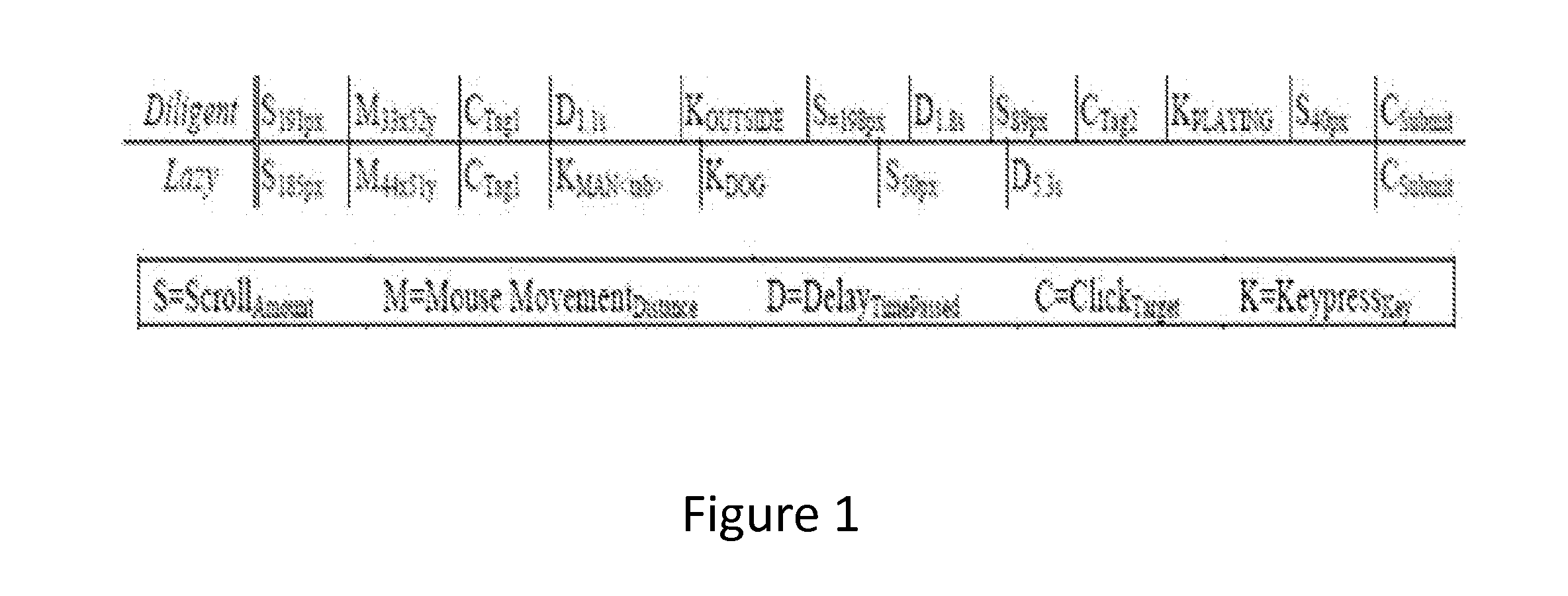System and Method of Using Task Fingerprinting to Predict Task Performance
a task and task fingerprinting technology, applied in the field of system and method of task fingerprinting to predict task performance, can solve the problems of high cheating rate of over 30%, difficulty in distributing such markets, and low labor intensity of workers
- Summary
- Abstract
- Description
- Claims
- Application Information
AI Technical Summary
Benefits of technology
Problems solved by technology
Method used
Image
Examples
Embodiment Construction
[0013]In one embodiment, a technique, called “task fingerprinting”, is used to evaluate task performance on crowdsourcing markets. This is accomplished by examining the way the workers work, rather than the products or output they produce. Task fingerprinting is used to collect and analyze behavioral traces in, for example, online task markets, and can be applied to other applications.
[0014]In one example, a task involves a worker performing some actions on an input (typically provided by the employer, resulting in some output. The input might be an image to tag, a document to summarize, or even just a set of guidelines for open response. Using this input, the worker engages in a series of cognitive and motor actions that result in changes in their web browser (e.g., mouse movements, scrolling, keystrokes, time delays, etc.) and produces an end product for the requester. This process can be represented as:
fworker(inputtask)=outputtask, worker
where the input is given by the employer...
PUM
 Login to View More
Login to View More Abstract
Description
Claims
Application Information
 Login to View More
Login to View More - R&D
- Intellectual Property
- Life Sciences
- Materials
- Tech Scout
- Unparalleled Data Quality
- Higher Quality Content
- 60% Fewer Hallucinations
Browse by: Latest US Patents, China's latest patents, Technical Efficacy Thesaurus, Application Domain, Technology Topic, Popular Technical Reports.
© 2025 PatSnap. All rights reserved.Legal|Privacy policy|Modern Slavery Act Transparency Statement|Sitemap|About US| Contact US: help@patsnap.com



